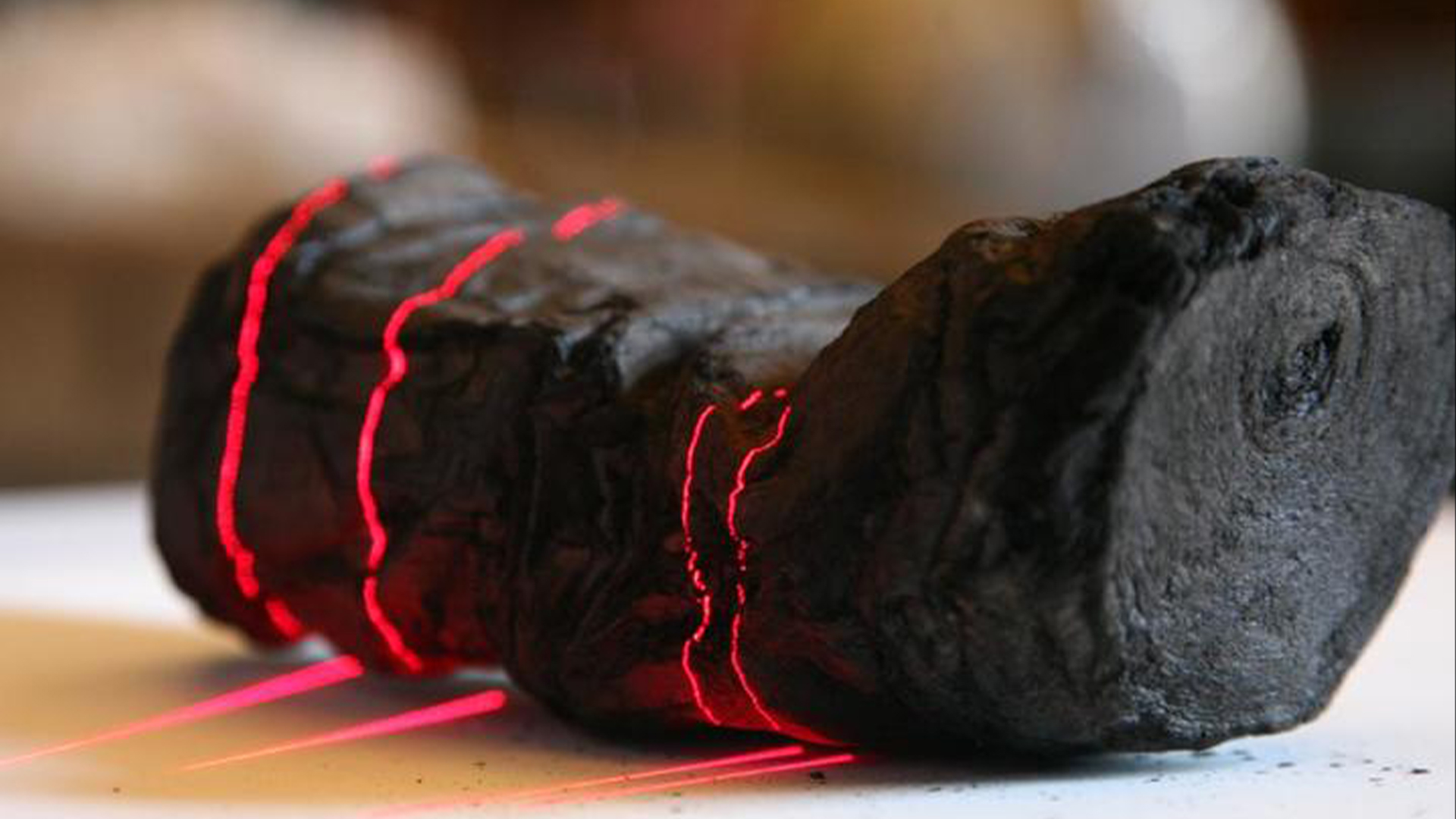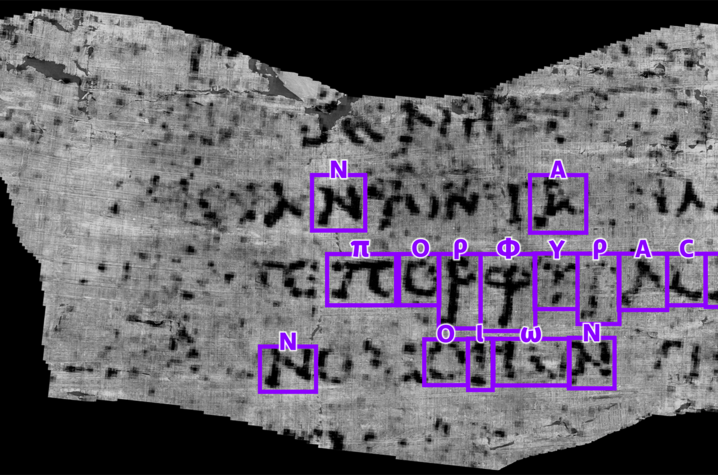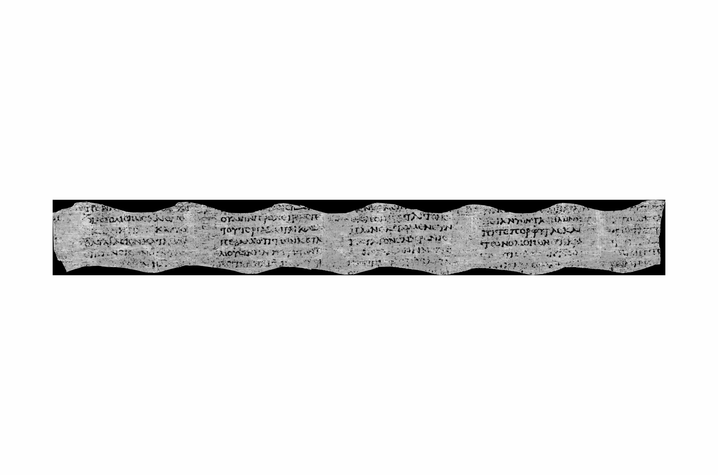AI reveals scroll's lost text after it was scorched by Mount Vesuvius eruption 2,000 years ago
Mount Vesuvius' eruption in A.D. 79 carbonized hundreds of scrolls and papyri in the ancient Roman city of Herculaneum. Now, AI has decoded part of a scroll.

For the first time, an entire word and several letters have been decoded from a scorched and carbonized scroll that barely survived the eruption of Mount Vesuvius' in A.D. 79. That word — πορφύραc in ancient Greek — means "purple dye" or "clothes of purple," a new artificial intelligence (AI) analysis finds.
The text is from one of hundreds of scrolls and papyri that were deemed unreadable when they were unearthed in the ancient Roman city of Herculaneum in Italy in the 1750s. But on Thursday (Oct. 12), the Vesuvius Challenge — a machine-learning competition for discovering the words within the Herculaneum papyri — awarded $40,000 to Luke Farritor, a 21-year-old computer science student at the University of Nebraska-Lincoln, for his detective work.
"I was walking around at night and randomly checked my most recent code outputs on my phone," Farritor, a SpaceX intern, said in a statement. "I didn't expect any substantial results, so when half a dozen letters appeared on my screen, I was completely overjoyed."

The Vesuvius Challenge was set up in March by Brent Seales, a professor of computer science at the University of Kentucky, and colleagues, who worked in partnership with a number of institutions worldwide — including EduceLab, the Library of the Institut de France and Silicon Valley investors. The challenge made the partners' software available to contestants, along with thousands of 3D X-ray images of two rolled-up scrolls and three papyrus fragments.
Related: Mysterious second writer of Dead Sea Scroll uncovered by AI
"The EduceLab team did a really great job of building a solid foundation for progress, especially for virtually unwrapping the scrolls," Farritor said. "I was able to use their prior work, as well as the observations of other contestants, to build a machine learning detector to find these letters."
Not long after Farritor's discovery, Youssef Nader, an Egyptian biorobotics graduate student in Berlin, uncovered the exact same word independently and with even clearer results, earning him a $10,000 prize. "It was exhilarating — reading text we did not understand, but we knew was left to us by people thousands of years ago," Nader said in the statement. "It was like peeking through a time machine into the past."
Sign up for the Live Science daily newsletter now
Get the world’s most fascinating discoveries delivered straight to your inbox.

Expert papyrologists analyzed the entries from both students. The reviewers were thrilled with the results, they said.
"It's extremely exciting to be reading entire words, not just sequences of letters, from within a scroll," Federica Nicolardi, an assistant professor in papyrology at the University of Naples Federico II, said in the statement. "The most unique feature of the Library of Herculaneum is that the preserved texts are entirely unknown from other sources. However, I'm confident we will soon be able to read more, understand the topic of the work, identify the scribe if already present in the collection and date the script."
She noted that purple dye was highly valued in the Roman Empire, as it was rare and had royal connotations. "[It] was made from the glands of sea snails, so the term could refer to purple colour, robes, the rank of people who could afford the dye or even the molluscs," she said.
When Mount Vesuvius erupted, it destroyed the ancient cities of Pompeii and Herculaneum, killing nearly 2,000 people. Excavations over the centuries have revealed the cities' treasures, including hundreds of scrolls, likely from Roman statesmen — including Julius Caesar's father-in-law, Lucius Calpurnius Piso Caesoninus. The papyri haven't decayed because they were entombed in dirt, mud, water and gases that flowed from the volcano, then desiccated by the heat and carbonized, which preserved them.
Additional prize money may lead to more decoded papyri. The first team that deciphers four passages of text from the inner layers by the end of 2023 can win $700,000, according to the statement. Another $50,000 will be awarded to those who can accurately detect ink from the papyri's 3D X-ray scans.
"What the challenge allowed us to do was to enlist more than a thousand research teams to work on a problem that would normally have about five people working on it," Seales said. "The competitive science aspect of this project is just fascinating."

Laura is the archaeology and Life's Little Mysteries editor at Live Science. She also reports on general science, including paleontology. Her work has appeared in The New York Times, Scholastic, Popular Science and Spectrum, a site on autism research. She has won multiple awards from the Society of Professional Journalists and the Washington Newspaper Publishers Association for her reporting at a weekly newspaper near Seattle. Laura holds a bachelor's degree in English literature and psychology from Washington University in St. Louis and a master's degree in science writing from NYU.










